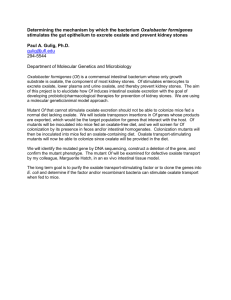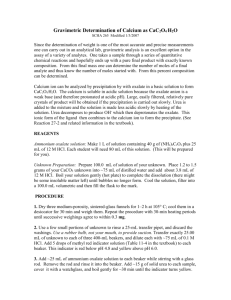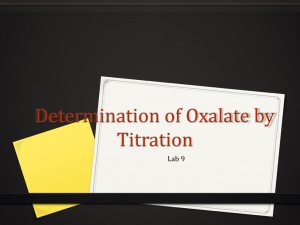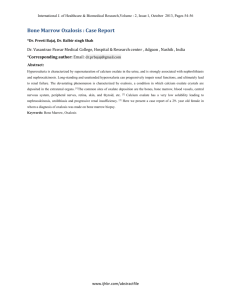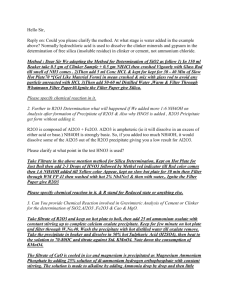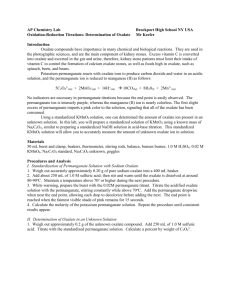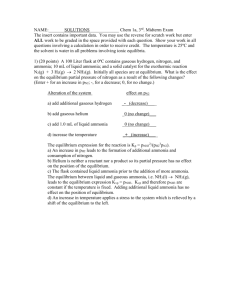Genetic Modification of Pseudomonas fluorescens ATCC 13525 for
advertisement
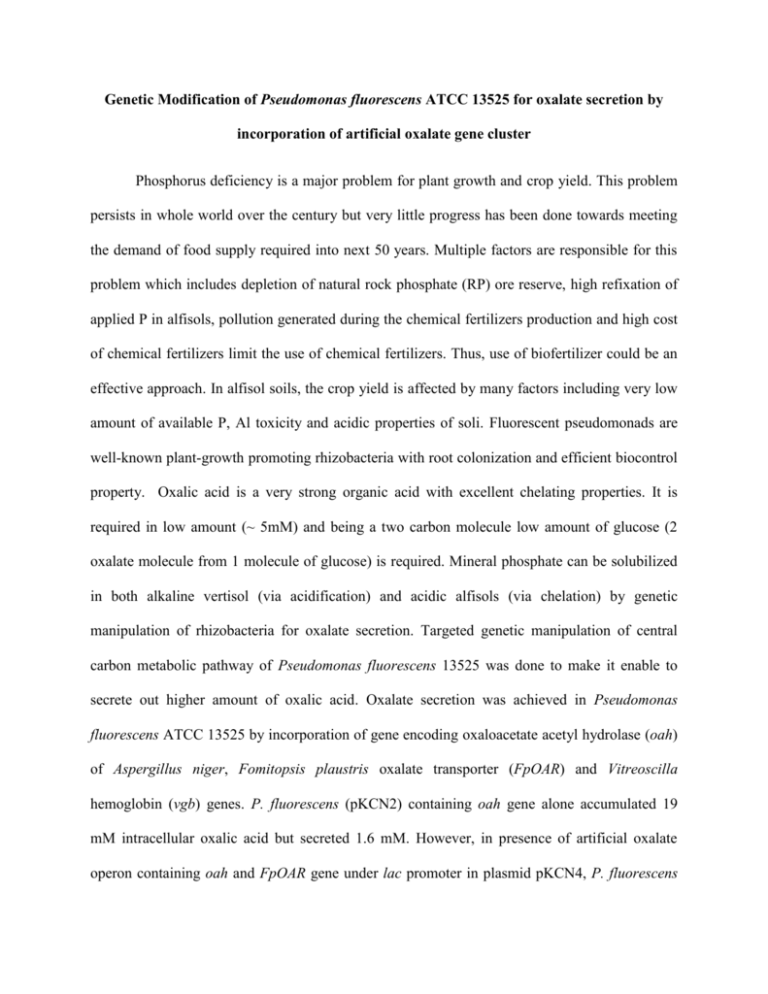
Genetic Modification of Pseudomonas fluorescens ATCC 13525 for oxalate secretion by incorporation of artificial oxalate gene cluster Phosphorus deficiency is a major problem for plant growth and crop yield. This problem persists in whole world over the century but very little progress has been done towards meeting the demand of food supply required into next 50 years. Multiple factors are responsible for this problem which includes depletion of natural rock phosphate (RP) ore reserve, high refixation of applied P in alfisols, pollution generated during the chemical fertilizers production and high cost of chemical fertilizers limit the use of chemical fertilizers. Thus, use of biofertilizer could be an effective approach. In alfisol soils, the crop yield is affected by many factors including very low amount of available P, Al toxicity and acidic properties of soli. Fluorescent pseudomonads are well-known plant-growth promoting rhizobacteria with root colonization and efficient biocontrol property. Oxalic acid is a very strong organic acid with excellent chelating properties. It is required in low amount (~ 5mM) and being a two carbon molecule low amount of glucose (2 oxalate molecule from 1 molecule of glucose) is required. Mineral phosphate can be solubilized in both alkaline vertisol (via acidification) and acidic alfisols (via chelation) by genetic manipulation of rhizobacteria for oxalate secretion. Targeted genetic manipulation of central carbon metabolic pathway of Pseudomonas fluorescens 13525 was done to make it enable to secrete out higher amount of oxalic acid. Oxalate secretion was achieved in Pseudomonas fluorescens ATCC 13525 by incorporation of gene encoding oxaloacetate acetyl hydrolase (oah) of Aspergillus niger, Fomitopsis plaustris oxalate transporter (FpOAR) and Vitreoscilla hemoglobin (vgb) genes. P. fluorescens (pKCN2) containing oah gene alone accumulated 19 mM intracellular oxalic acid but secreted 1.6 mM. However, in presence of artificial oxalate operon containing oah and FpOAR gene under lac promoter in plasmid pKCN4, P. fluorescens secreted 15 mM oxalate in the medium while 3.6 mM remained inside. This transformant solubilized 509 µM P from rock phosphate in acidic alfisol which is 4.5 fold higher than the Pf (pKCN2) transformant. Genomic integrant of artificial oxalate gene cluster, containing oah gene of A. niger, FpOAR gene of F. plaustris under lac promoter, vgb gene of Vitreoscilla under natural oxygen sensitive promoter and egfp under growth dependent promoter, were created to nullify the plasmid load on metabolism of host. P. fluorescens int1, a genomic integrant of the artificial oxalate operon (plac-FpOAR-oah), secreted 4.8 mM oxalic acid, released 329 µM P while another genomic integrant, Pf int2, containing artificial oxalate gene cluster (plac- FpOARoah, vgb, egfp) secreted 5.4 mM oxalic acid and released 351 µM P, in acidic alfisol. Genomic integrants, Pf int1 and Pf int2 showed enhanced root colonization, improved growth and increased P content of Vigna radiata plants. Thus, this study demonstrates oxalic acid secretion in P. fluorescens ATCC 13525 by incorporation of artificial oxalate operon and artificial oxalate gene cluster imparts mineral phosphate solubilizing ability leading to enhanced growth and P content of Vigna radiata in acidic alfisol soil. Aditionally, incorporation of vgb gene along with artificial oxalate operon could help in better survival and colonization of organism in soil environment.
